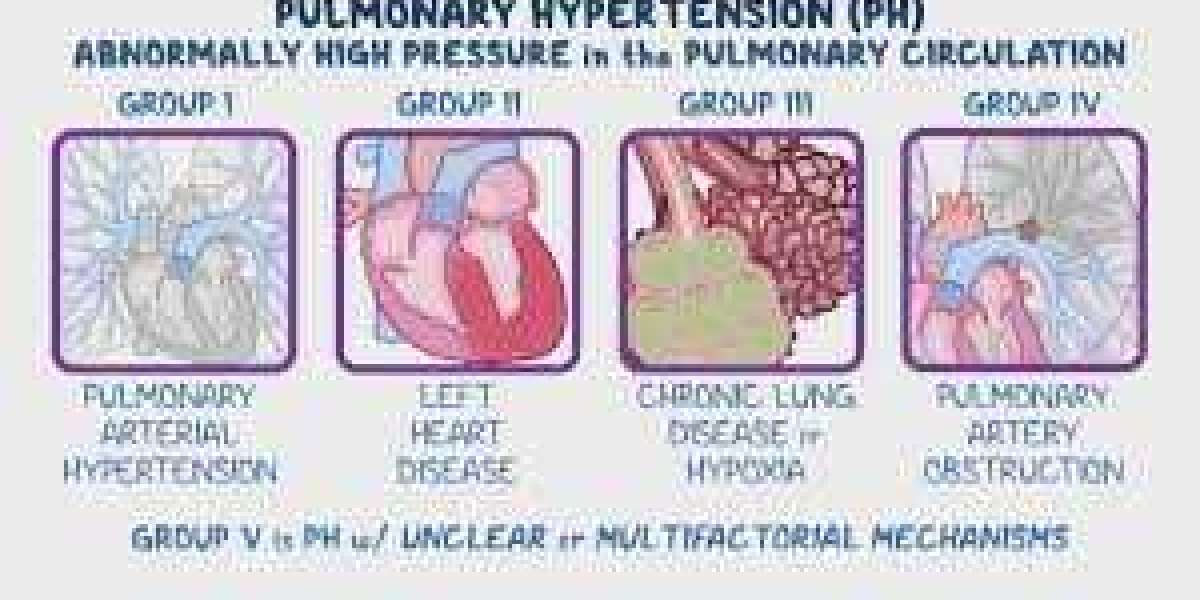Pulmonary Hypertension (PH) is a complex and often misunderstood medical condition that affects the arteries in the lungs and the right side of the heart. Despite being a life-altering diagnosis for many, PH remains underdiagnosed and frequently mistaken for other more common illnesses like asthma or chronic obstructive pulmonary disease (COPD). This blog aims to break down what Pulmonary Hypertension really is, its causes, symptoms, treatments, and how to live a fulfilling life while managing this serious condition.
What is Pulmonary Hypertension?
Pulmonary Hypertension occurs when the blood pressure in the pulmonary arteries becomes elevated. These arteries are responsible for carrying oxygen-poor blood from the right side of the heart to the lungs. When these blood vessels become narrowed, blocked, or damaged, the heart must work harder to pump blood through them. Over time, this extra strain can weaken the heart and potentially lead to heart failure.
PH is not a single disease but a condition that may result from several underlying causes. It's classified into five different groups based on the origin of the disease—ranging from left heart disease to chronic lung disorders and genetic factors.
Symptoms You Shouldn’t Ignore
One of the main reasons PH is difficult to diagnose early is because its symptoms mimic those of other common conditions. These include:
Shortness of breath, especially during physical activity
Fatigue and general weakness
Dizziness or fainting spells
Chest discomfort or pressure
Swelling in the ankles, legs, and abdomen
Bluish lips or skin due to low oxygen levels
If left untreated, these symptoms can progress and significantly reduce a person’s quality of life.
What Causes Pulmonary Hypertension?
Pulmonary Hypertension can develop due to a wide range of health issues. Some of the most common causes include:
Chronic lung diseases such as emphysema or pulmonary fibrosis
Blood clots in the lungs (pulmonary embolism)
Congenital heart defects
Left-sided heart disease
Connective tissue disorders like lupus or scleroderma
Liver diseases and certain infections
Genetic mutations or idiopathic origins (unknown causes)
Understanding the root cause is essential because it helps guide the treatment approach.
How Is PH Diagnosed?
Early detection is key in slowing the progression of PH. Diagnosis typically involves a combination of the following:
Echocardiogram: A non-invasive test that provides an image of the heart and estimates the pressure in the pulmonary arteries.
Right Heart Catheterization: A more accurate test where a catheter is inserted into the heart to measure pulmonary artery pressure directly.
Pulmonary Function Tests: To assess how well the lungs are working.
CT scans, X-rays, and blood tests to rule out other causes and get a full view of the heart and lung health.
Treatment Options for Pulmonary Hypertension
Although there is currently no cure for Pulmonary Hypertension, several treatments can manage symptoms, improve quality of life, and slow disease progression:
1. Medications
Vasodilators: These help open narrowed blood vessels and reduce pressure in the lungs.
Endothelin Receptor Antagonists: These block substances that tighten blood vessels.
Phosphodiesterase-5 Inhibitors: These help relax the blood vessels in the lungs.
Anticoagulants and diuretics may also be prescribed in specific cases.
Some patients explore support medications, including the fildena purple pill, in consultation with their doctor, for its vasodilation effects and circulatory support in related health scenarios.
2. Oxygen Therapy
Supplemental oxygen may be required if oxygen levels are too low, especially during sleep or physical activity.
3. Lifestyle Adjustments
Maintain a low-sodium, heart-healthy diet
Avoid smoking and secondhand smoke
Stay physically active within limits set by a doctor
Manage weight and reduce stress levels
Follow up regularly with your specialist
4. Advanced Therapies
In more severe cases, lung transplantation or atrial septostomy (a surgical procedure to relieve pressure on the heart) may be considered.
Living Well with Pulmonary Hypertension
A PH diagnosis may feel overwhelming, but with the right care plan, many people live full and active lives. Key to success is education, consistent treatment, and strong emotional support. Joining a patient support group, staying informed, and maintaining open communication with your healthcare team all contribute to improved outcomes.
Conclusion
Pulmonary Hypertension is a serious condition, but it doesn’t have to steal your quality of life. By understanding the disease, recognizing early symptoms, and following a tailored treatment plan, patients can take control of their health journey. Whether you're newly diagnosed or supporting a loved one, knowledge is your most powerful ally in managing PH.






